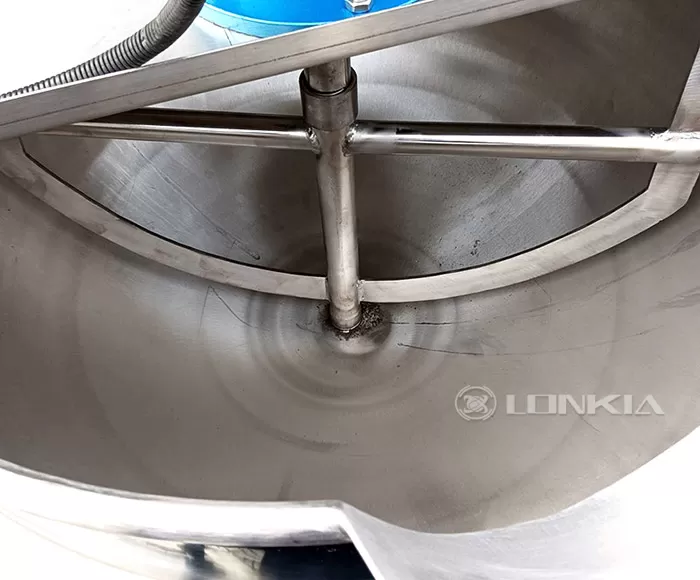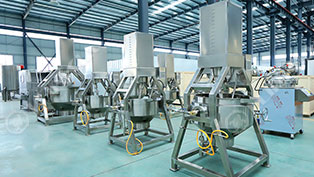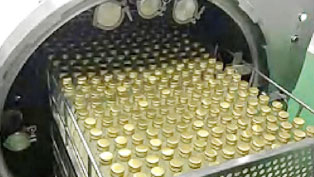A Planetary Stirring Jacketed Kettle is an essential piece of equipment in commercial food production, used for cooking sauces, soups, confectionery, and high-viscosity foods. To ensure consistent performance, longevity, and food safety, regular maintenance and cleaning are crucial.
In this blog, we’ll outline best practices for keeping your jacketed kettle in peak condition, preventing downtime, and maintaining hygiene compliance.
🔹 1. Daily Cleaning Procedures
✅ Why It’s Important:
Regular cleaning prevents food residue buildup, ensures efficient heating, and reduces the risk of contamination.
🔧 Step-by-Step Cleaning Process:
1️⃣ Turn Off & Cool Down – Ensure the kettle is completely powered off and cooled to a safe temperature before cleaning.
2️⃣ Drain Residual Contents – Use the tilting mechanism or discharge valve to remove food remnants.
3️⃣ Rinse with Warm Water – Flush out loose particles with warm water to prevent clogging.
4️⃣ Apply Food-Grade Detergent – Use a non-abrasive cleaner to dissolve grease and food residues.
5️⃣ Scrub with a Soft Brush or Sponge – Focus on the inner surface, mixing arms, and scraper blades.
6️⃣ Rinse Thoroughly – Ensure no detergent residue remains.
7️⃣ Sanitize – Use a food-safe sanitizing solution to kill bacteria.
8️⃣ Dry Completely – Use air drying or lint-free cloths to prevent moisture buildup and rust formation.

🔹 2. Weekly Deep Cleaning Routine
✅ Why It’s Important:
Over time, stubborn food deposits and scale buildup can affect the efficiency of heating and mixing. A weekly deep clean helps remove these residues.
🔧 Recommended Deep Cleaning Steps:
✔ Inspect & Remove Deposits – Check for burnt-on residues or scaling and use a vinegar or citric acid solution to dissolve them.
✔ Clean the Steam Jacket – Flush the jacketed layer with a descaling solution to remove mineral buildup.
✔ Check Mixing Components – Remove and clean agitators, scrapers, and seals for thorough sanitation.
✔ Lubricate Moving Parts – Apply food-grade lubricants to ensure smooth operation.
🔹 3. Preventative Maintenance Checklist
✅ Why It’s Important:
Routine maintenance prevents unexpected breakdowns, reduces repair costs, and extends the lifespan of the machine.
🔧 Key Maintenance Tasks:
✔ Inspect Seals & Gaskets – Replace worn-out gaskets to prevent leaks.
✔ Check the Tilting Mechanism – Ensure smooth tilting to prevent operational issues.
✔ Test Temperature Sensors – Calibrate for accurate heating performance.
✔ Monitor Steam or Electric Heating System – Look for blockages, leaks, or inefficiencies.
✔ Tighten Bolts & Fasteners – Prevent loose parts from causing misalignment.
🔹 4. Safety Tips for Cleaning & Maintenance
🔧 Best Practices for Safe Operation:
✔ Always Power Off Before Cleaning – Prevent electrical hazards.
✔ Use Non-Abrasive Cleaning Tools – Avoid scratching the stainless steel surface.
✔ Wear Protective Gloves & Aprons – Protect against hot surfaces and cleaning chemicals.
✔ Follow Manufacturer Guidelines – Use only approved cleaning agents and lubricants.
🔹 5. Benefits of Regular Cleaning & Maintenance
✔ Improved Equipment Efficiency – Ensures faster heating and consistent mixing.
✔ Enhanced Food Safety – Prevents bacterial contamination and maintains hygiene compliance.
✔ Extended Equipment Lifespan – Reduces wear and prevents costly repairs.
✔ Minimized Downtime – Ensures continuous production without unexpected breakdowns.
🔹 Conclusion: Keep Your Jacketed Kettle in Optimal Condition
A Planetary Stirring Jacketed Kettle is a critical investment in food production. Regular cleaning and maintenance will:
✅ Prevent food buildup and contamination.
✅ Ensure precise heating and mixing performance.
✅ Reduce operational costs by avoiding major repairs.
At LONKIA Machinery, we provide high-quality jacketed kettles with easy maintenance features. Contact us today to learn how to optimize your equipment performance for efficient production! 🚀



